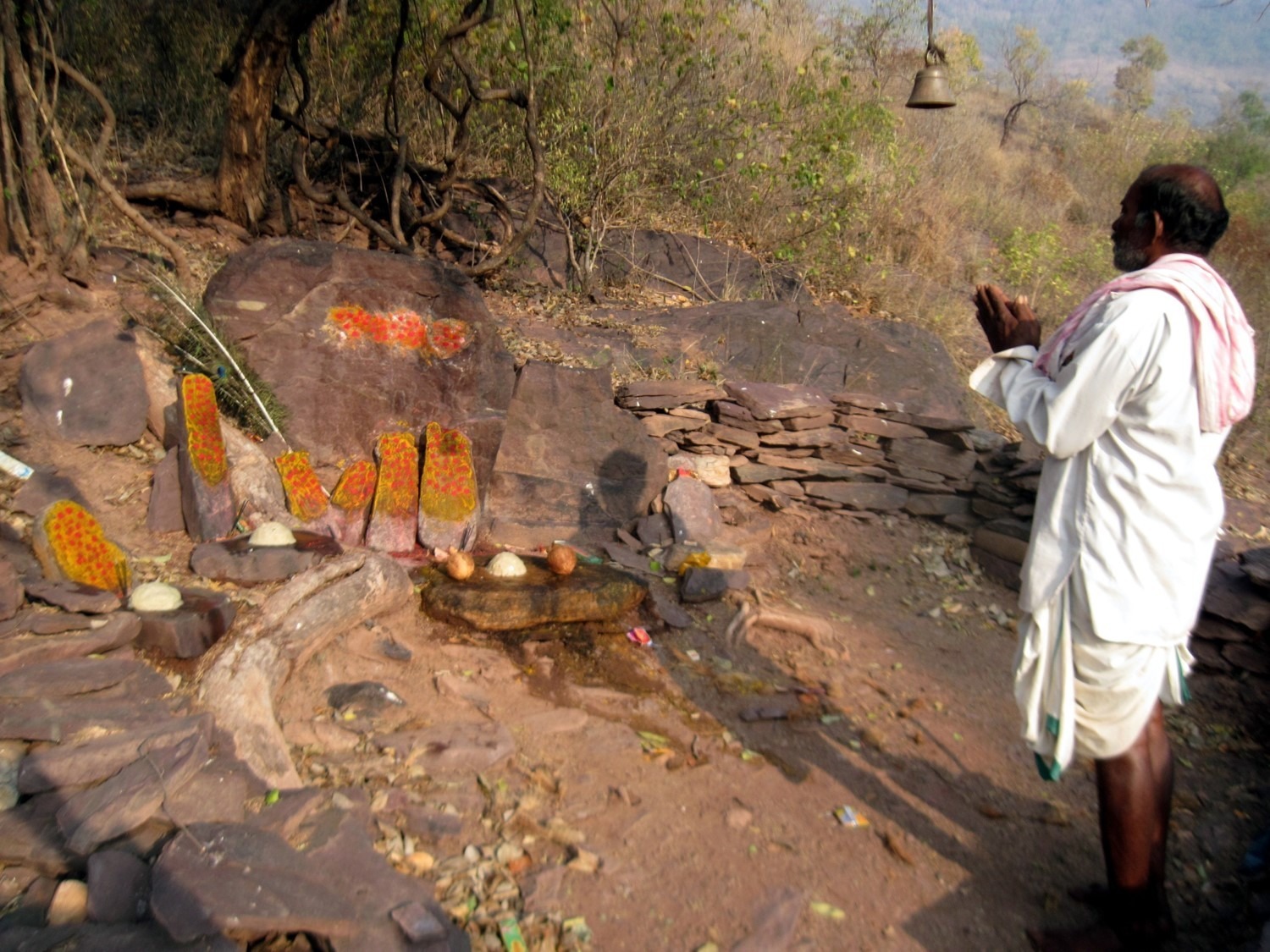One of the memorable, Geo Spirit meets was organized in the Nallamalai forest, near Yerragondapalem, Prakasam District, Andhra Pradesh State, India. Nallamalai forest is an important part of the Eastern Ghats covering parts of Telangana and Andhra Pradesh States. It is hosting the largest tiger reserve in Asia. The rock formations comprise mainly of quartzite and shales. The biodiversity of tropical dry deciduous forests and fauna makes it most beautiful. The forest trees with various forms in the background of quartzite add to the beauty. The streams created beautiful valleys. The gravel bed streams with adjoining magnificent trees made this place a paradise. It was in the first week of February 2012 one of the Geo Spirit meets was organized with the support of an NGO working with local tribal communities.
The participants from Hyderabad arrived one day ahead at Yerragondapalem. It is a small town. There were 18 participants from Hyderabad and 12 Chenchu tribes. After having breakfast started on a tractor-trailer. To avoid the heavy vibrations on the rough forest path, the trailer was half-filled with sand.
On the way saw Veerabhadra Swamy Temple, an ancient temple at Ganjivaripalli (16.033085, 79.200097), from here onwards the road towards Palutla (about 30 km away) is a rough earth road with gravel and small stones. The road and stream channel run parallel. Palutla village was known for cotton cultivation, along the way saw cotton sticking to the branches of the trees when the vehicles laden with cotton moved.
On the way, had lunch with types of Sorghum rotis, i.e., plain roti, salted roti and hot roti (salt and pickle added while preparation). This is the traditional food of the local Chenchu tribes. By around 4:00 pm we reached a place called ‘Peddamma Bayyanna temple’ Camp (16.097315, 79.124722) which is about 20 km away from Ganjivaripalli on the way to Palutla where Tribal people worship. Only the basic facilities were available such as a hand pump for water, one solar light and a bamboo hut built by the forest department.
Four groups were formed with two to three tribal people in each group and were asked to transect walk in different directions. All the groups’ members were instructed, not to go more than one km. All the teams have collected information on local biodiversity. After returning the teams shared their understanding and experience, against the sun setting over the hills.
In all the Geo Spirit meets modest food is preferred. On the way, we had crispy Rotis prepared with Sorghum flour, added with garlic, chilli paste, and salt. For dinner, the food was cooked on three-stone stoves. A local variety of brown rice and vegetable curries were prepared and served. For the first time tasted i.e. Deodar leaf curry, Istsapa kaya curry, and Medikaya curry – it was like egg scramble in appearance and taste. Next day breakfast was the tasty Ragi-ball and rice with sambar.
The Chenchu tribe living in the forest were more knowledgeable. It was decided to learn from them first about their life in the forest, wildlife encounters or sightings, and any other stories. Tried to know their aspirations. Many of them do not have any intuition to en masse wealth but preferred to survive through what mother earth provides.
They were afraid of tigers which were rare to find. Leopards were most ferocious, but above all the bears caused more injuries and killed people living in the forest.
After breakfast, the team went to banks of a stream for appreciation and experiencing nature. Each one participated in the Geo Spirit exercises gets connected with nature through the activities such as –being Calm; bathing in the gentle rays of morning Sun; walking barefoot with closed eyes and experiencing the mother earth; hearing sounds of nature;listening to the calls of jungle fowls and birds; appreciating the trees; hugging trees, feeling the texture of tree parts; observing insects and birds; smelling surroundings; etc.
Having born on this earth experiencing the environment and being part of the earth enriches one’s spirit.
In the morning, the tribals prepared breakfast. By the time we all were hungry. We thought they would serve breakfast immediately after cooking. But we were asked to wait for half an hour. They said that they would serve us only after offering prasadam (the sweet dish of rice and coconuts) to their gods. One of them had taken a bath, took the food in fresh leaves and placed before the stones (idols) as an offering. These stones locally available in millions were simple slabs. Although they have no significant shape, they pasted dots of red vermillion over yellow turmeric coloured on them. They had specific names for each stone. If one of the stone is missing, they would have replaced with another stone and prayed with the same reverence.
There were trees around the ‘Idols’. They were praying the stones and life around as gods/goddess. Nature and the ecosystem are real Gods for them, which were sustaining life and created a living space. Ultimately they believe that “God is in everything”, including non-living things like stones.





